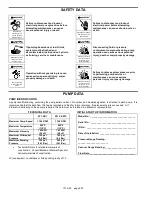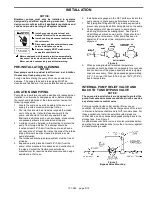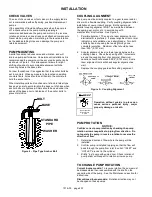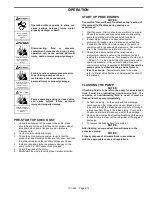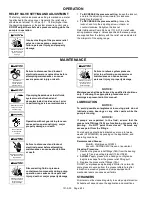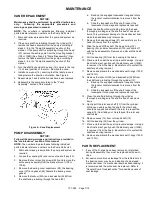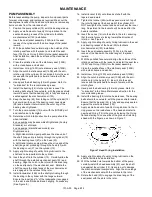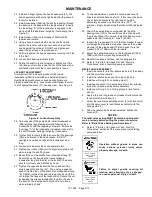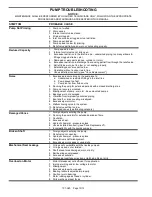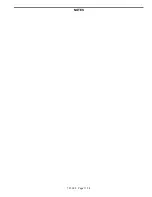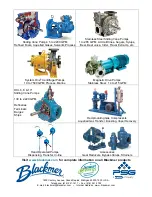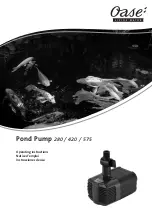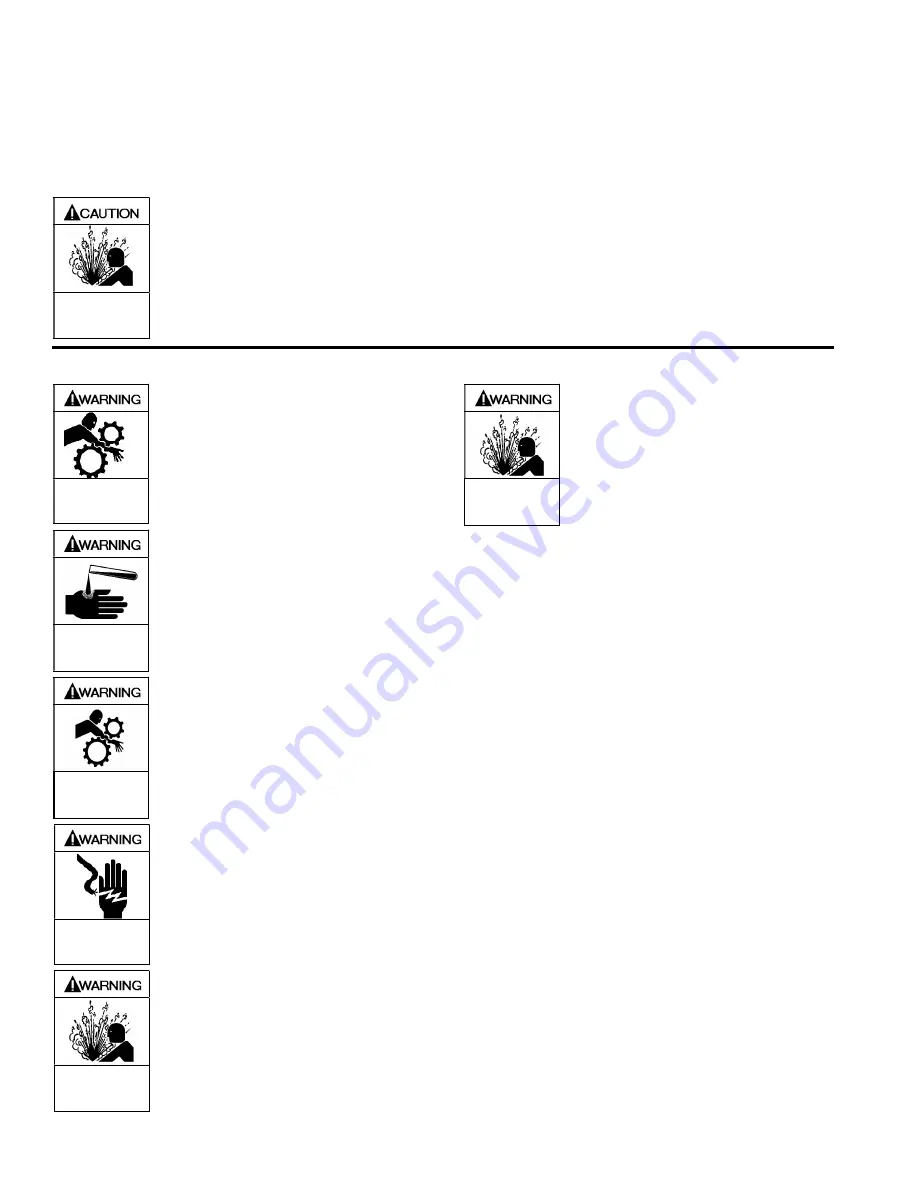
101-A00 Page 6/12
OPERATION
RELIEF VALVE SETTING AND ADJUSTMENT
The factory relief valve pressure setting is marked on a metal
tag attached to the valve cover. Generally, the relief valve
should be set at least 10 - 20 psi (0.7 - 1.4 Bar) higher than
the operating pressure or the system pressure control valve.
DO NOT adjust the relief valve pressure setting while the
pump is in operation.
Incorrect settings of the pressure relief
valve can cause pump component
failure, personal injury, and property
damage.
Hazardous pressure
can cause personal
injury or property
damage
1.
To INCREASE the pressure setting,
loosen the locknut,
and turn the adjusting screw
inwar
d, or clockwise.
Retighten the locknut
2.
To DECREASE the pressure settin
g, loosen the
locknut, and turn the adjusting screw
outwar
d, or
counterclockwise. Retighten the locknut
Refer to Blackmer Pump Parts List 101-A01 for relief valve
spring pressure ranges. Unless specified otherwise, pumps
are supplied from the factory with the relief valve adjusted to
the mid-point of the spring range.
MAINTENANCE
Failure to disconnect and lockout
electrical power or engine drive before
attempting maintenance can cause
severe personal injury or death
Hazardous
machinery can
cause serious
personal injury.
If pumping hazardous or toxic fluids,
system must be flushed and
decontaminated, inside and out, prior
to performing service or maintenance
Hazardous or toxic
fluids can cause
serious injury.
Operation without guards in place can
cause serious personal injury, major
property damage, or death.
Do not operate
without guard
in place
Failure to disconnect and lockout
electrical power before attempting
maintenance can cause shock, burns
or death
Hazardous voltage.
Can shock, burn or
cause death.
Disconnecting fluid or pressure
containment components during pump
operation can cause serious personal
injury, death or major property damage
Hazardous pressure
can cause serious
personal injury or
property damage
Failure to relieve system pressure
prior to performing pump service or
maintenance can cause serious
personal injury or property damage.
Hazardous pressure
can cause serious
personal injury or
property damage
NOTICE:
Maintenance shall be performed by qualified technicians
only. Following the appropriate procedures and
warnings as presented in this manual.
LUBRICATION
NOTICE:
To avoid possible entanglement in moving parts do not
lubricate pump bearings or any other parts while the
pump is running
.
NOTICE:
If pumps are repainted in the field, ensure that the
grease relief fittings (76A) are functioning properly after
painting. Do NOT paint them closed. Remove any
excess paint from the fittings.
Pump bearings should be lubricated every one to twelve
weeks (AT MINIMUM), depending on the application, and
operating conditions.
Recommended Grease:
Mobil® - Mobilgrease XHP222,
Exxon® - RONNEX MP Greas
e, or equivalent.
Greasing Procedure:
1. Remove the grease relief fittings (76A) from the bearing
cover (27) and mounting bracket (108 or 108B).
2.
SLOWLY
apply grease with a hand gun until grease
begins to escape from the grease relief fitting port.
3. Replace the grease relief fittings (76A).
DO NOT overgrease pump bearings. While it is normal for
some grease to escape from the grease telltale hole after
lubrication, excessive grease on pumps equipped with
mechanical seals can cause seal failure.
STRAINERS
Strainers must be cleaned regularly to avoid pump starvation.
Schedule will depend upon the application and conditions.
Summary of Contents for XB1A
Page 11: ...101 A00 Page 11 12 NOTES...


